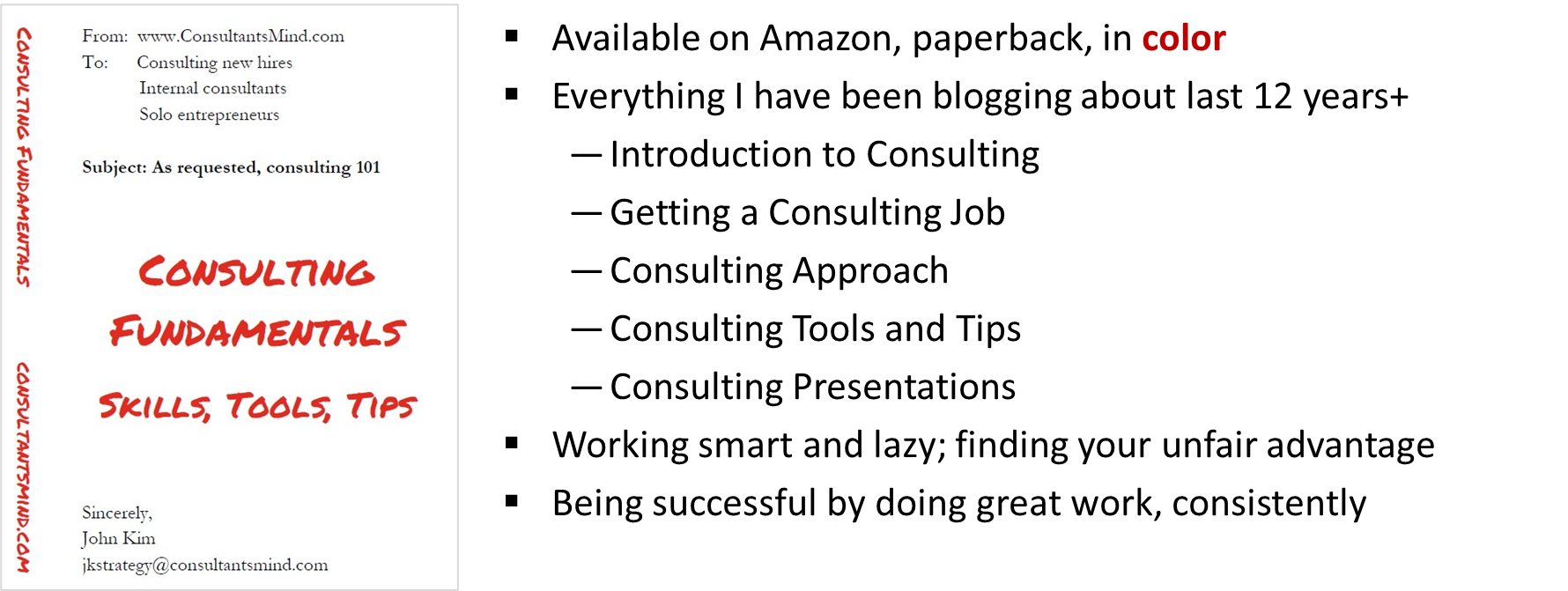Why is consulting tribal?
It’s easier to work with people you have history with. You can jumpstart and go directly to performing.
Forming, storming, norming, performing
This is a classic framework that Professor Bruce Tuckman developed in the 1960s that describes how groups operate. It’s a linear process that all groups go through to some extent. Forming (people join the team), Storming (often there can be differences in work styles), Norming (group reaches agreement on goals, and mutual accountability), Performing (real productivity / jamming starts). Goal: Start performing as soon as possible.
For some, this might seem obvious, but since the majority of high-value work is often team-based, but here are some things to consider. Things I have experienced over the last 20 years:

1) Forming
Most professional services organizations are made of tribes of people. Partners typically have their “go-to” players and producers. While there is always a place for mentorship and learning, people like to work with people they know, like, and trust. Who doesn’t.
Build a strong personal brand for consistency and coachability. You want to be the one they (senior manager, staffing manager) choose for their projects.
Get the right people on the bus. This is a phrase popularized by Jim Collins, who emphasizes the importance of the right people. First WHO, then WHAT.
Ask around. Referrals are the way to go. This is true for Amazon, Yelp, Angie’s List and teams.
2) Storming
As the word implies, the beginning days of any team can be rocky. After all, people are different. We have different backgrounds, expectations, strengths and fears. Diverse teams can be a great source of creativity, discovery, fun, and heartache.
Look for the upside in the differences with your team members. We should be happy that we’re not all the exact same person. Who wants to be a business robot?
Assume good intent. This is an embryonic phase of the team where you don’t want to cross wires, or set a bad mood. If necessary, take the high road and “laugh it off”. No one is trying to offend you; it’s more likely that they’re just bad communicators. Diversity without trust is chaos – so be willing to give a little.
Let people speak. Everyone has a point of view, opinion, and words. This is something I have gotten better at. Leaders speak less and ask more questions.
3) Norming
Things start to settle down. The folks on the team are less defensive, less self-conscious, and generally smiling more. This can be an explicit process (team building, setting the “rules of the road”), but it’s usually people just get used to each other. Professional friendships form.
Be likable. Not a deep point. Be easy to work with – this is likely a temporary team. Be a professional. Do the work, Learn. Coach others.
Give before asking. Like the cardinal rule in networking, be a giver. Be less entitled. Go the extra mile. Find white spaces to add value.
Show humility. Be the one who books the conference room, types up meeting minutes, orders the food. Civility is always attractive.
4) Performing
We all know what this looks like. The team is jamming. People are playing to their strengths, producing great work. Not only is work getting done – but everyone is learning / coaching / having fun. There is flow; time flies. Love making other people successful.


Very rightly said. It does get frustrating at times when you have people from different background with different personalities holed up in a small room for weeks. I suggest taking a walk around the block:)
p.s. I benefit a lot from your blogs. Thank you for sharing your experience with us!
Thanks for reading. Yes, agreed. Successful people (including all of us) can take ourselves too seriously. More exercise, reflection, learning, grace, forgiveness, and fun. Oh, and sleep.